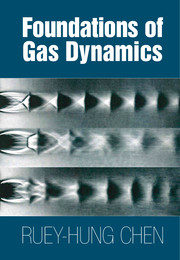Before embarking on writing this book, I asked myself: With some excellent textbooks already covering this subject, why another one? In one aspect, this book is probably not different from the others in the field, in that it results from over thirty years of experience in learning and teaching the subject of compressible flow (or gas dynamics). The present book is written in what I believe to be an efficient way of learning and presenting the subject materials, reflecting my own perspective as a student and, more importantly, with feedback from students I have taught during the last two decades. Examples and exercise problems, which are many for this level of coverage, are chosen similarly.
For a typical mechanical and aerospace engineering curriculum, this book might serve well for senior- or first-year graduate students. The materials are more than sufficient for a one-semester course, allowing the instructor and students to choose materials based on the desired level of coverage. Practicing engineers should also find this book a useful review.
One readily finds that the physics of the subject defines the theme of the book. Results from mathematical derivations are explained so that readers can develop physical understanding and intuition. Therefore, I have made no attempt to incorporate numerical methods for solving governing equations of compressible flow. The approach is intuitive and students should only need a simple scientific calculator to follow and understand the materials. Tables and graphs are included wherever necessary to present key results and solve example and exercise problems. Detailed numerical treatises of gas dynamics can be found in many excellent books on this specialized topic, such as those listed in the Reference section. The example problems are chosen to facilitate understanding essential concepts and they might recur in several chapters, even with the same given Mach numbers, wedge and shock wave angles, and so on, to illustrate the development of theories as one progresses from one chapter to another with increasing depth. No attempt is made to obtain third decimal accuracy in the example problems, whether using a table or graph, because effort should be better focused on understanding the materials.
While striving to be intuitive and emphasizing physical understanding, the rigor of theory derivation is not lost.
